Sheet metal is a critical component of modern manufacturing, but a lot of companies are in the dark about what it can do. Sheet metal does a lot more than just lay flat. It can be used to make intricate designs, high-strength parts, and many other things that can change the way you make things. In this article, we’ll talk about the different methods, benefits, and uses of sheet metal manufacturing.
Sheet metal fabrication involves a variety of processes that turn flat pieces of metal into complicated parts and products. By cutting, forming, joining, and finishing, you can make precise, versatile parts for all sorts of industries, such as automotive, aerospace, and electronics.
You may be wondering how sheet metal can be so versatile and efficient. It’s all about the processes you use. Whether you are making car parts or building architectural elements, the right sheet metal processes can make a big difference. Let’s take a closer look at what sheet metal can do and how you can use it for your manufacturing needs.
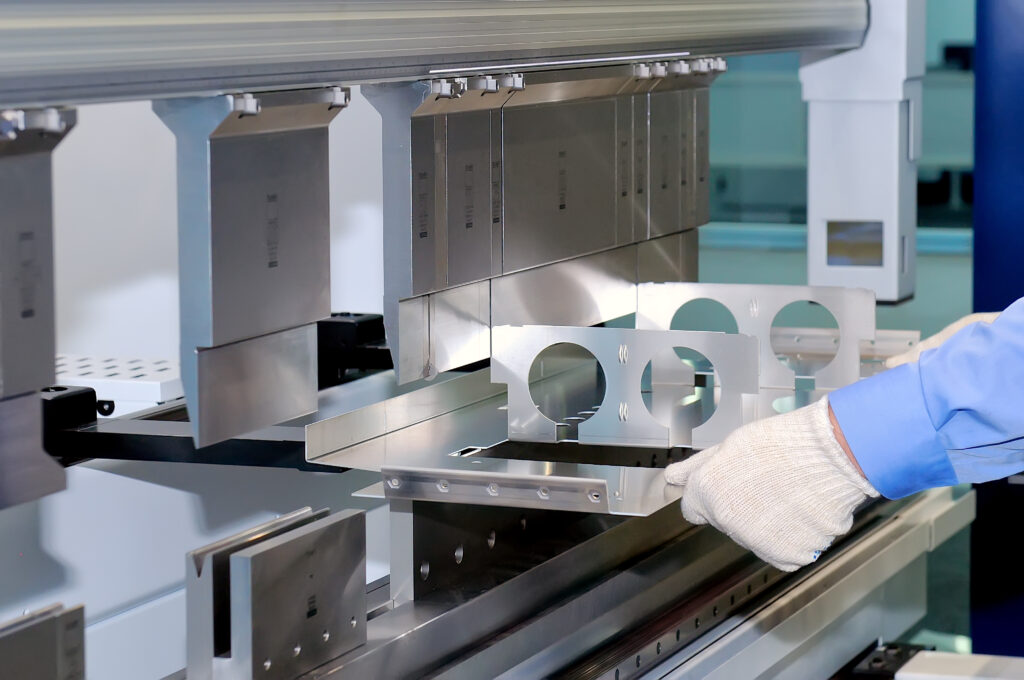
What Techniques Are Used in Sheet Metal Fabrication?
Cutting Techniques
Laser Cutting
Laser cutting uses a high-energy laser beam to make clean, precise cuts. It’s perfect for detailed designs and has great edge quality. You’ll find laser cutting in automotive and aerospace where precision is everything.
Waterjet Cutting
Waterjet cutting uses a high-pressure stream of water mixed with abrasive particles to cut. It’s a cold cutting process, which means it doesn’t generate heat. You’ll find waterjet cutting in electronics and architectural applications where heat can be damaging.
Plasma Cutting
Plasma cutting uses an ionized gas jet to cut through electrically conductive materials. It’s fast and efficient and is used for cutting thick steel plates for construction and machinery.
Shearing
Shearing cuts sheet metal along a straight line by applying a shearing force. It’s a simple and cost-effective way to make straight cuts in sheet metal and is used in the early stages of production.
Blanking and Punching
Blanking is the cutting of flat shapes out of larger sheets, while punching is the cutting of holes or patterns. These techniques are used to create parts with exact dimensions and are used in manufacturing electrical enclosures and automotive parts.
Sawing
Sawing uses a serrated blade or rotating abrasive wheel to cut materials into shapes. It’s versatile and can be used with a variety of metals, allowing you to make complex cuts.
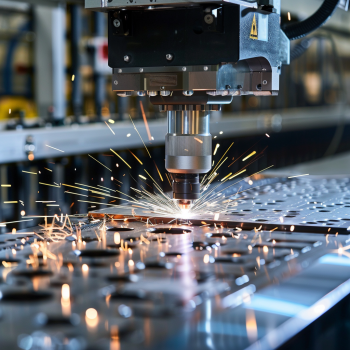
Forming Techniques
Bending
Bending changes the shape of sheet metal along a straight line to create angles or curves. Using press brakes or other bending machines, you can make brackets, enclosures, and frames.
Roll Forming
Roll forming is a continuous bending process that makes long, consistent profiles by passing sheet metal through rollers. You can make channels, tubes, and other long parts.
Punching
Punching puts holes, slots, or other shapes in sheet metal using a punch and die set. It’s one way to make detailed parts with specific patterns, which is important in electronics and decorative applications.
Deep Drawing
Deep drawing makes deep, hollow shapes by stretching the metal into a die cavity. You can make fuel tanks, kitchen sinks, and automotive parts.
Hydroforming
Hydroforming presses room temperature working material into a die using high-pressure hydraulic fluid to make lightweight, structurally stiff parts. The automotive and aerospace industries use it a lot.
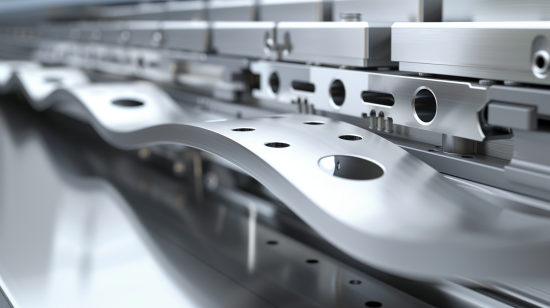
Joining Methods
Welding
Welding fuses two or more pieces of metal together by melting them. MIG, TIG, and spot welding are common ways to join sheet metal, making strong, durable connections, especially in structural applications.
Riveting
Riveting uses rivets inserted through pre-drilled holes to join metal sheets. It’s a way to make strong, structurally sound connections, which is why you see it in aerospace and automotive industries.
Mechanical Fasteners
Screws, bolts, and nuts are mechanical fasteners that provide strong connections and are typically used in applications where you need to take things apart or when you need adjustable connections. You see them in electronics and machinery assembly.
Adhesive Bonding
Adhesive bonding uses industrial adhesives to join metal parts. It’s a way to join different materials or when welding isn’t possible. You see it in automotive assembly and consumer electronics.
Soldering
Soldering bonds metal surfaces together using a low-temperature metal alloy. You find it in electronics where you need a precise, low-heat method.
Clinching
Clinching joins sheet metal by deforming the materials together without any additional fasteners. It’s a fast, cost-effective way to join similar or dissimilar materials.
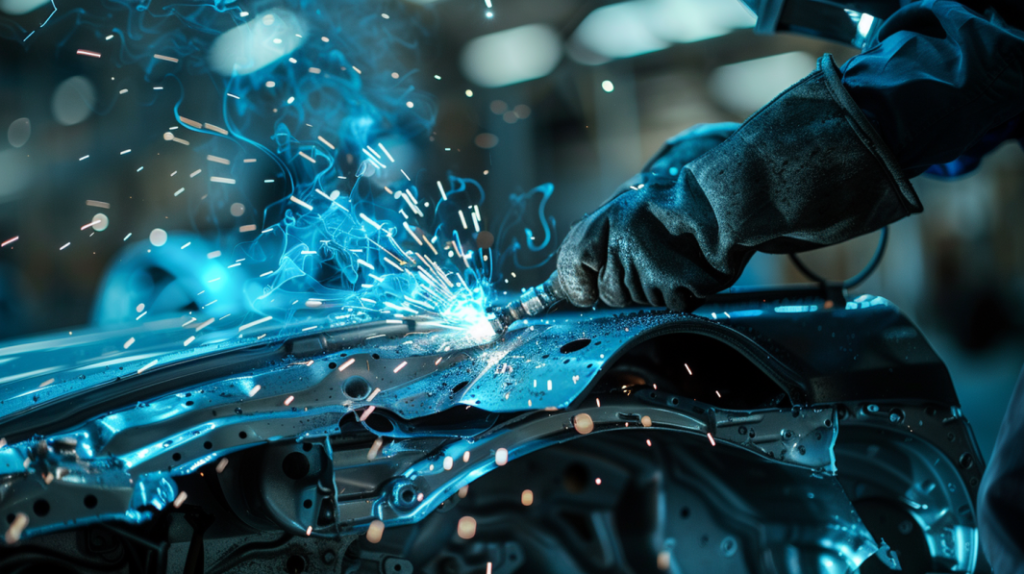
Finishing Operations
Powder Coating
Powder coating is a durable, good-looking finish that resists corrosion, scratches, and UV damage. It’s great for outdoor and industrial applications.
Anodizing
Anodizing makes aluminum parts look cool, adds corrosion resistance, and gives you decorative options. You see it a lot in aerospace, automotive, and consumer electronics
Plating
Plating puts a layer of metal on top of your metal to protect it or make it look cool. You see zinc, nickel, and chrome plating in automotive and electronic components.
Polishing and Brushing
Polishing and brushing make your metal look good and feel good. It makes the surface clean and smooth. You see it a lot in consumer products and decorative applications.
Deburring
Deburring gets rid of sharp edges and burrs on your metal parts, making sure they’re safe to handle and look good.
Grinding and Sanding
Grinding and sanding make your surface smooth and nice, getting it ready for more finishing processes like painting or coating.
Painting
Painting your metal surface gives it color and makes it look good. It also helps protect it from corrosion. You see it a lot in automotive, construction, and consumer products.
Galvanizing
Galvanizing puts a protective coating of zinc on steel or iron to keep it from rusting. You see it on outdoor structures and things that are out in the weather.
Laminating
Laminating puts a layer of plastic or something else on your metal to protect it and make it look nice. You see it a lot in decorative and architectural applications.
Electroplating
Electroplating uses electricity to put a metal coating on an electrode. This makes your metal look good and helps it resist corrosion.
Passivation
Passivation is a chemical treatment that makes stainless steel more resistant to corrosion by cleaning it and forming a thin, protective oxide layer.

Quality Control
Non-Destructive Testing (NDT)
We use NDT methods, such as ultrasonic testing, radiographic testing, and magnetic particle testing, to find defects and make sure our parts are good without breaking them.
Quality in sheet metal fabrication comes from checking things and measuring things all the time. Making sure our parts are strong and perform like they’re supposed to means our stuff works like it should. Premium uses fancy quality control to make sure we make good parts that work the right way.
What Are the Applications of Sheet Metal?
Automotive
We use sheet metal to make cars, including the body panels and the stuff underneath. We use laser cutting and bending to make it precise and strong.
Aerospace
In aerospace, we use sheet metal to make planes, and it has to be lightweight and super strong. We use roll forming and welding to make airplane wings, fuel tanks, and stuff to put the engines in.
Medical
In medicine, we use sheet metal to make tools and parts for machines. We use anodizing and powder coating to make sure it’s clean and safe.
Consumer Electronics
In consumer electronics, we use sheet metal to make the box, the brackets, and the stuff to hold it all together. We use cutting and bending to make it look good and work right.
Construction
In construction, we use sheet metal to make the roof, the stuff that holds the building up, and the things that make it hot or cold inside. We use shearing and bending to make sure it’s strong and looks good.
Industrial Machinery
In factories, we use sheet metal to make the machines that make the things you use every day. We make the box, the stuff that holds it together, and the parts that make it work right.
Renewable Energy
We use sheet metal to make things like solar panels and windmills. It’s strong and can take the weather.
Lighting
In lighting, we use sheet metal to make the box that holds the lightbulb. It’s shiny and can be bent into cool shapes.
Audio Equipment
In audio, we use sheet metal to make the box that holds the speakers and the stuff that makes it sound good. It looks cool and makes it work right.
Food Processing
In food, we use sheet metal to make the machines that make the food you eat. It’s clean and easy to clean. We use stainless steel a lot because it’s clean and good for food.
Marine Industry
On the water, we use sheet metal to make boats and the stuff on the boats. We use stainless steel and aluminum because it doesn’t rust in the water.
HVAC Systems
In heating and air conditioning, we use sheet metal to make the pipes, the box that holds the stuff, and the things that make it hot or cold in your house.

What Materials Are Used in Sheet Metal Manufacturing?
Stainless Steel
We use stainless steel because it doesn’t rust and it’s good for food, medical stuff, and things that look cool. You can get different kinds of stainless steel like 304, 316, and 430, and they’re all a little different.
A36 Steel
We use A36 steel because it’s good and strong and you can bend it. You see it in buildings, bridges, and things that need to be strong.
Aluminum
We use aluminum because it’s light and doesn’t rust. You see it in planes, cars, and the stuff you buy from the store.
Copper
Copper is good for electrical stuff because it carries electricity well. You see it in your house, in things that look cool, and in the pipes that carry water.
Brass
Brass is copper mixed with zinc, and it’s good because it doesn’t rust and you can cut it. You see it in things that look cool, musical instruments, and in your house.
Titanium
We use titanium because it’s light, strong, and doesn’t rust. You see it in planes, the stuff the doctor uses on you, and in the factory where they make stuff that’s not good for you.
Nickel Alloys
Nickel alloys are super strong and can take the heat and the bad stuff. You see them in the airplane engine, in the factory where they make the stuff that makes electricity, and in the factory where they make the stuff that’s not good for you.
Galvanized Steel
We use galvanized steel because it doesn’t rust. You see it outside and in the factory where they make the stuff that’s not good for you.
Carbon Steel
We use carbon steel because it’s strong. You see it in buildings, cars, and the stuff that makes the stuff you use every day.
Bronze
Bronze is copper and tin mixed together, and it’s good because it doesn’t wear out and you see it in things that move, things you use, and things that look cool.
High-Strength Steel
We use high-strength steel because it’s strong and you can make it thin and light. You see it in cars, buildings, and the stuff that makes the stuff you use every day.
Superalloys
Superalloys, like Inconel and Hastelloy, are super strong and can take the heat and the bad stuff. You see them in the airplane engine, the factory where they make the stuff that makes electricity, and the factory where they make the stuff that’s not good for you.

Why Choose Sheet Metal for Manufacturing?
Durability
Sheet metal lasts a long time and doesn’t wear out easily, even if you use it a lot.
Flexibility
You can bend sheet metal into all kinds of shapes, so you can make a lot of different things with it.
Cost-Effectiveness
Making things from sheet metal doesn’t cost a lot of money, even if you make a bunch of them, so you save a lot of money.
Recyclability
Sheet metal is good for the earth because you can use it again and again, so you don’t have to throw it away.
Precision
We can cut and bend sheet metal very accurately, so we can make things that are exactly the right size and shape.
Strength-to-Weight Ratio
Aluminum and titanium are light, but they’re strong, so they’re good for making things that need to be light.
Aesthetic Appeal
We can make sheet metal look good, so it’s good for things that you look at.
Speed of Production
We can cut out and make sheet metal parts very fast, so you can get them soon after you order them.
Customization
We can make sheet metal into anything you want, so you can have something that’s just for you.
Integration with Modern Technologies
We can use sheet metal with new stuff like Industry 4.0 and the Internet of Things to make things faster and better.
Sustainability
We can make sheet metal in a way that’s good for the earth by not wasting anything, using stuff over and over again, and not using a lot of energy.
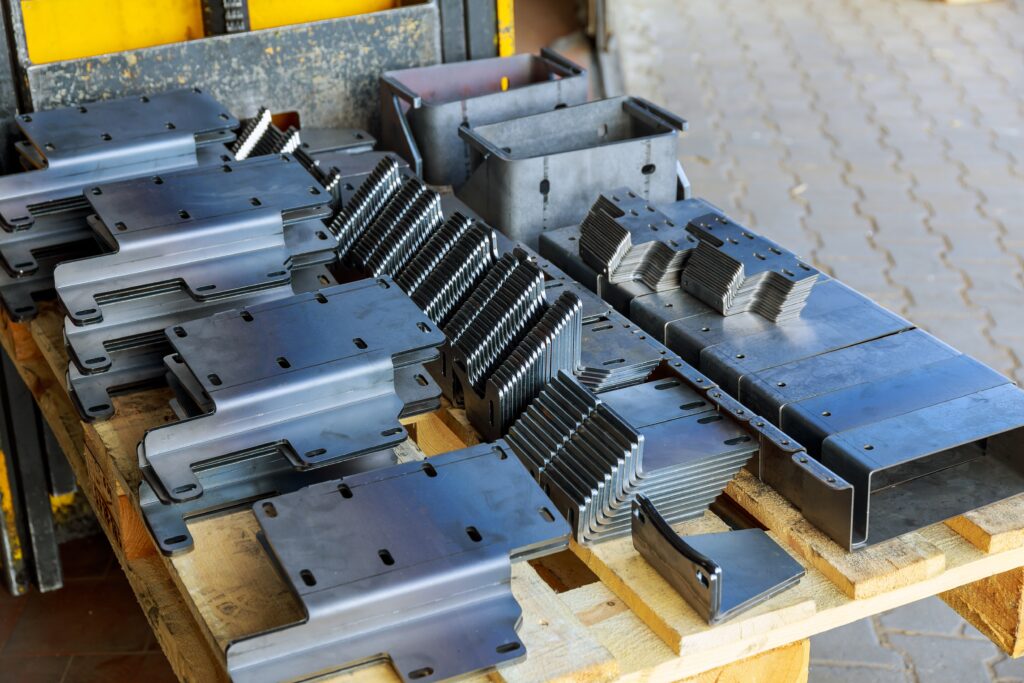
What Are the Challenges in Sheet Metal Manufacturing?
Consistency in Surface Treatment
It’s hard to get the same finish on everything you make. We use fancy techniques and check everything to make sure it looks the same.
Quality Control
We have to make sure everything is perfect, and we don’t make mistakes. We check everything to make sure it’s good.
Material Optimization
We have to use the right stuff for what we’re making, so it works good and doesn’t cost a lot of money. We have to know what each thing is and what it does so we can make the right choice.
Tolerance Management
We have to make sure everything fits together perfectly. We have to cut and bend everything just right so it all works.
Distortion and Warping
Sometimes, things don’t come out right, and we have to fix them. We have to use the right stuff and do things the right way to make sure they come out right.
Inventory Management
We have to keep track of everything we use and everything we make. We have to make sure we have the right stuff when we need it so we can make the right stuff when we need it.
Cost Management
We have to make sure we don’t spend too much money. We have to make things in a way that doesn’t cost a lot but still works good.
Lead Time Management
We have to make things fast and get them to you when you need them. We have to plan everything right and make sure we have everything we need to make things fast.
Compliance with Standards
We have to do everything the right way. We have to follow the rules and make sure everything is safe and works like it should.
Waste Management
We have to make sure we don’t waste anything. We have to use everything we have and make sure we don’t throw stuff away.
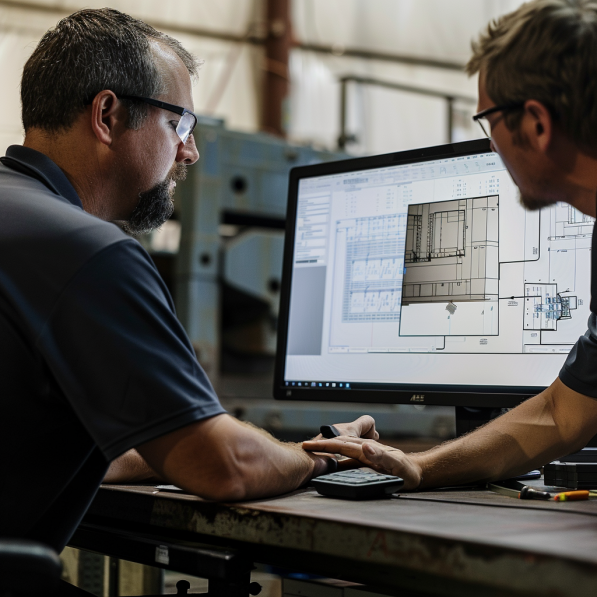
Conclusion
Sheet metal manufacturing is great for making a lot of different things. You can cut it, bend it, and put it together in all kinds of ways to make cool stuff. If you want to save money, get good parts, and use the latest technology, you should have Premium make your sheet metal parts. Whether you’re in cars, planes, hospitals, or making the stuff you buy at the store, sheet metal manufacturing can make the things you need fast and right.

